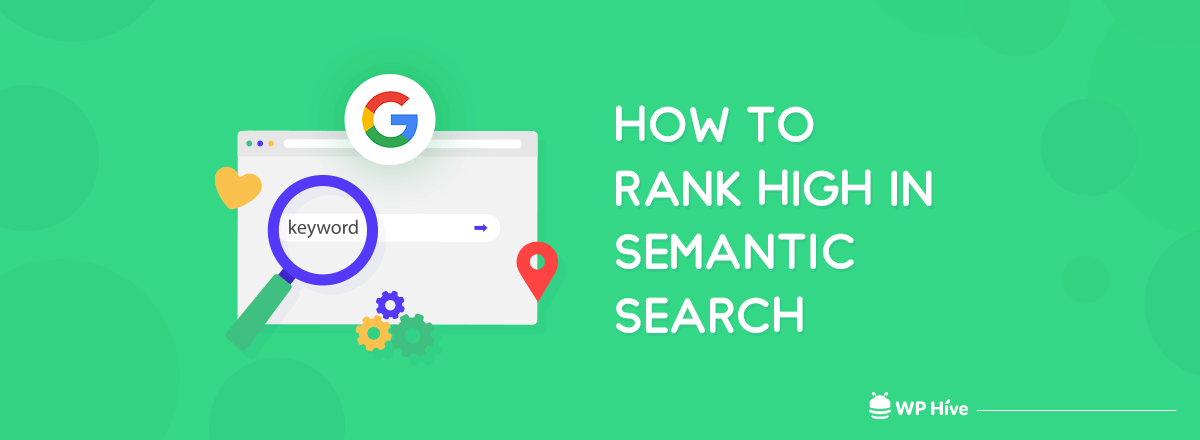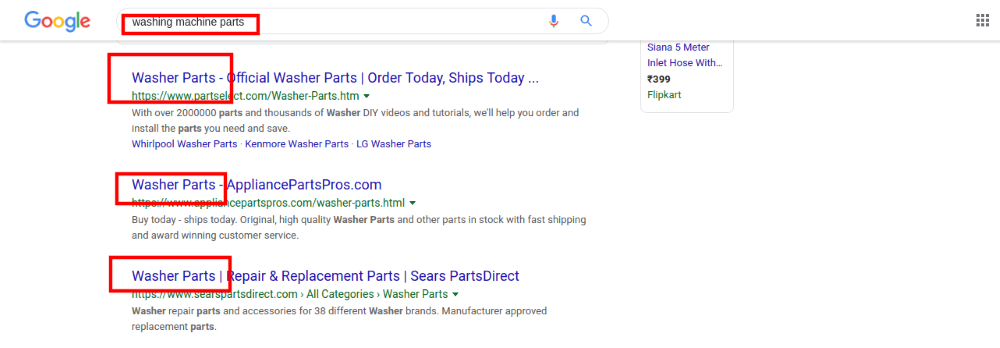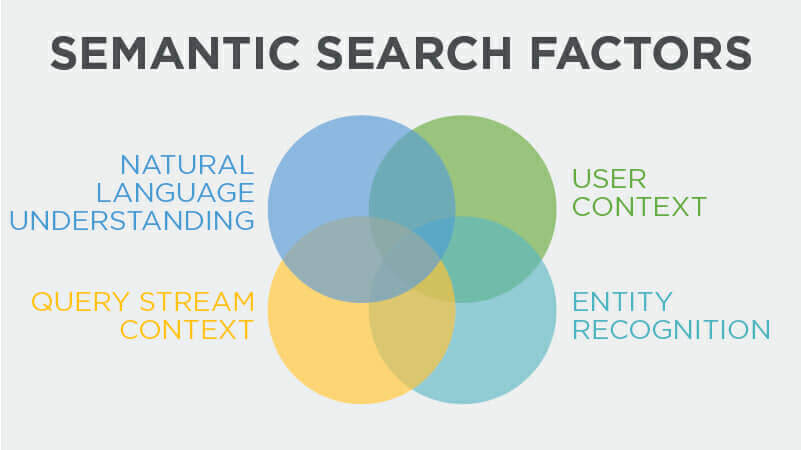What Is Semantic Search and How Can You Take Advantage of It to Rank Higher

Do you remember the early days of searching on the internet? This was way before businesses and individuals started adapting for semantic search on WordPress and other websites.
If you did not enter the exact term for what you were looking for, it was nearly impossible to get useful results. But nowadays we expect Google to give accurate answers irrespective of the accuracy of the keyword entered by us.
In fact, we are amazed on the rare occasions when the search engine fails to give us correct information. Have you ever thought about how this is impacting your website? The search engine giant is no longer interested in only the keywords used in your content.
Google has been using other factors such as semantics, page speed and the overall relevance of your content to finalize its position in related search results. Whether you run a website design company or business website you must know how to make the best strategy to take full advantage of semantic search.
Quick Navigation
What Is Semantic Search?
To understand what is semantic SEO, you have to know about semantic search.
Take a look at the search results for the term “washing machine parts” in the below image:

If you pay a bit close attention, you will find that Not even a single entry in the first three results contain the exact term. This does not mean that the results are incorrect.
On the contrary, they are accurate and useful.
Semantic search refers to this kind of action where the search engine determines the intent and the context of the term
It uses natural language elements like synonyms, word variations, speaking trends, etc. to understand the user’s intent. Google uses not only the past data related to a specific term but also the user’s search pattern to present a set of results.
For instance, I was searching for and reading the news about the US- Mexico border closing. I followed it up with a search for Mexico’s capital and I got the result even without entering the complete phrase:

The search engine used my usage pattern to generate the output. This is the reason even incorrectly-spelled phrases give accurate results.
How Did Semantic Search Come Into Existence?
During the early days of searching, some people started stuffing their websites with relevant keywords. This helped them achieve higher rankings in SERPs even if they did not provide the best solution. This set Google on the path to explore ways to make its algorithm understand human language. In 2003, a paper authored by R. Guha (IBM), Rob McCool (Stanford University), and Eric Miller (W3C/MIT).
The theory of semantic search was introduced. It talked about how semantic web can lay the foundation for better search. The semantic web uses sets, properties, and relations to organize the huge amount of information available in the internet. Search engines can now use semantic information on a web page to make their decisions with the help of Artifical Intelligence.
The Hummingbird Update
In 2013, Google released the Hummingbird update which marked the beginning of the conversational search. Google also launched Google Now at that time to help people get things done.
The purpose of the Hummingbird update was to complement Google Now and provide users search results based on the user’s voice. The search engine update impacted how people looked for solutions.
Before deploying Hummingbird, Google launched its knowledge graph. Knowledge Graph pulled out special information and highlighted them in the search page for your convenience.
See the following image to know how knowledge graph works for a search term “chocolate chip cookies.” The SERP contains standard search results and links. But the difference is, the SERP also has a new kind of knowledge data.
The blue marked portion contains a rich set of knowledge graph data, including a recipe on the right. The rich knowledge graph data also provides nutritional facts about this food so users might find it helpful.

Now, although the query was for the chocolate chip cookies, semantic search understood the intent behind this search. Google then served up results that match the searcher’s intent rather than searcher language/term. Hence, we see a SERP full of recipes, nutritional facts, and other topics related to making or eating the cookies.
Since 2013 lot of things have happened in the voice search area. Google has launched Google Assistant and it has been learning every day with great machine learning and AI (Artificial Intelligence) capabilities. Recently, Google even showed a working demo of a call between a human and Google Assistant. The human could not identify Google Assistant was not in fact another human.
Here’s the demo of Google’s Duplex.
The RankBrain Algorithm
The world came to know about the RankBrain algorithm in 2015. It is a machine learning system which uses artificial intelligence to process search queries.

The algorithm helps the search engine process unique and unknown phrases and present relevant results.
Since 2015’s RankBrain Algorithm update, Google Assistant has been training to understand the nuances of conversation. Google has been working on this technology for many years. Google Duplex brings together all the investments of Google in natural language understanding, text to speech and deep learning under one roof.
The future of SEO is Semantic Search.
How To Optimize WordPress Websites For Semantic Search?
There are many advantages of strategizing for semantic search on WordPress websites. The first and most natural benefit would be to get better SERP positions.
Another big advantage of optimizing for this kind of search queries is a better click-through rate (CTR). This means that a lot more people will be visiting your interface. Let’s see how you can gear up your website for semantic searches.
1. Create Content With Clear Focus
You must have understood by now that search engines have become smarter and have the ability to comprehend the meaning of your content. Creating high-quality material with relevant and useful information will be helpful. You must also ensure that the matter has a clear focus specifically answers the question asked by searchers. For instance, Copyblogger is an online resource for content writers. The kind of helpful information it provides to its target audience enables it to feature prominently in search results.
Read the following article on best WordPress SEO plugins and tools to make yourself acquainted with other online resources for writers.
2. Use Structured Data Markup
It will be helpful to add structured data markup to your interface’s code. Also known as Schema markup, this code helps search engines understand the contents of a web page in a better manner. Once search engines start getting deeper information about your pages, they will start appearing in more search results. WordPress users can take help of plugins for implementing structured data markup on their interfaces.

In the above image, the Schema markup has enabled the display of information about upcoming events at a hotel. This additional data will be useful for people making plans for an evening outing and will be considered more informative by the search engine as well.
[Read how to enable Schema Markup]
3. Understand The Intent Of The Users
With search engines now powerful enough to understand the intent of users, you must adopt a similar approach. Try to find out about what your audience wants and match it what your website is offering to them. Create fresh content or remodel the existing one to generate a material that communicates a direct and precise message to the users.
Read more on: Writing What You Want to Read – 5 Audience Engagement Strategies
4. Target Long-tail Keywords
Even if exact-match terms have started mattering less, long-tail keywords can still help you get good results. Try to identify the most appropriate terms for your domain and integrate them seamlessly into content. This will help you in targeting the phrases which can be a part of the text as well as voice searches.
SEO is a tough job. But it does not have to. Get the complete WordPress SEO Guide to make sure you are on the right track.
5. Include Conversational Tone in Your Content
One of the best ways to improve your content and make it ready for semantic search is to include words, phrases, lines that people may ask an assistant.
For example, if you are writing an article “best restaurants near Heathrow airport?” a great way to improve the article will be to add questions like “What is the best restaurant near Heathrow Airport?“
This will make sure you have a greater chance to appear in the first few SERPs.
Conclusion
You can use the above-mentioned tips to take advantage of semantic search on your WordPress websites. This will make it easier for your audience to locate tour interface and will help improve the website traffic.
Learn more about WordPress SEO and use an SEO optimized theme for best results.

Disclosure: WP Hive earns a commission when you buy through partner links. It does not influence the unbiased opinions of our writers. Learn more →
https://wphive.com/seo/semantic-search/
Saif Hassan
Product Manager by passion & profession. Lead Product Manager at weDevs, former PM @ Poptin. Passionate about writing & tech. He's an advocate of Human-Centered Design and believes that websites and the tools used to build them should be well crafted, intuitive, and accessible. Cyclist. Reader. A WordPress ninja 🥷, HCI expert & a design thinker 💡



